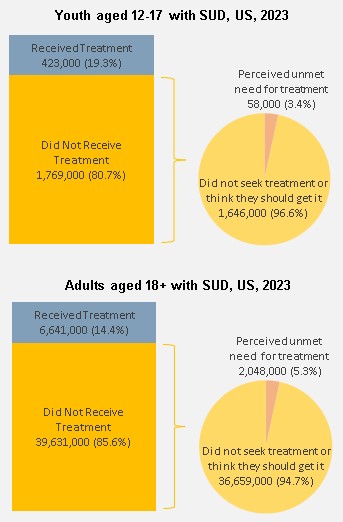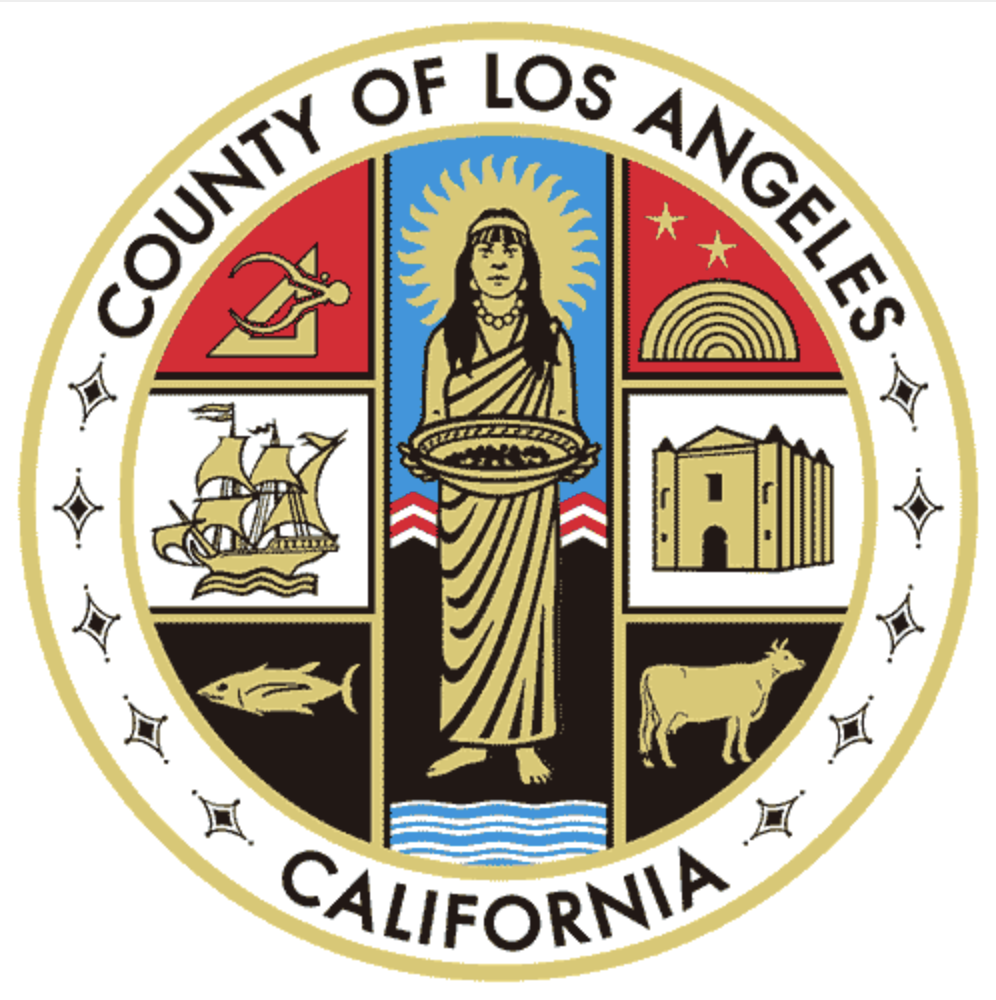Treatment
Although many people believe that cannabis is not addictive and does not cause problems, studies have shown that cannabis use can lead to the development of cannabis use disorder, in which the user cannot stop using despite cannabis use-related health and social problems. It is estimated that about 9% – 30% of cannabis users develop some degree of cannabis use disorder, with early initiators (first use before age 18) at higher risk (NIDA, 2019).
There are currently no medications available to treat cannabis use disorder. However, psychosocial interventions, such as motivational enhancement with cognitive-behavioral therapy and contingency management, have been shown to be effective (Sabioni, 2019).
Likelihood of Seeking Treatment, US
In 2023, among the 48.5 million individuals in the U.S. aged 12+ who had a substance use disorder (SUD), only 14.6% received substance use treatment in the past year.
The low treatment rate may due to the pervasive belief among individuals with an SUD who did not receive treatment, that they did not need treatment (96.6% among youth 12-17, and 94.7% among adults 18+), and thus very few perceive a need to seek out treatment (Figure 1).
Los Angeles County is committed to increasing treatment access rates by focusing more efforts to engage and reach the 95% of people with SUDs who do not access treatment services because they either don’t want or believe that they need help.
Figure 1. Perceptions of need for substance use treatment, US, 2023

Note: Numbers and percentages may not add to 100% due to rounding. Excludes respondents with missing information on perceived need.
Cannabis Treatment Admissions in LAC
In fiscal year 2022-2023 (FY2223), there were 3,476 patients that accounted for 4,239 admissions to publicly funded substance use disorder treatment programs in Los Angeles County (LAC) in which the patient reported cannabis as their primary drug problem. The number and percent of all admissions and clients with a primary cannabis problem decreased from FY1314 to FY1718, then remained relatively stable through FY2223 (Figures 2-3).
From FY1314 to FY2223, the number of admissions were highest among youth aged 0-17 (40%) and decreased with age (Figure 4). While the proportion of primary cannabis admissions among youth aged 0-17 decreased from 49% in FY1314 to 30% in FY2223, the proportion among adults aged 26-34 increased from 11% to 28% (Figure 5).
Males accounted for nearly two-thirds (63%) of primary cannabis admissions (Figure 6). The proportion of primary cannabis admissions among females increased slightly from 35% in FY1314 to 40% in FY2223 (Figure 7).
From FY1314-FY2223, Latinxs accounted for over half (60%) of all primary cannabis admissions, while Black/African Americans accounted for over one-quarter (26%) and Whites accounted for 9% (Figure 8).
Latinxs consistently had the largest proportion of primary cannabis admissions, which increased from 57% in FY1314 to 62% in FY2223. The proportion of primary cannabis admissions declined among Black/African Americans from 31% in FY1314 to 25% in FY2223 (Figure 9).
Cannabis Treatment Admissions by LAC Regions
The number of primary cannabis admissions decreased in all LAC Service Planning Areas (SPAs) from FY1314 to FY1718 (except SPA 3 – San Gabriel), then remained relatively stable through FY2223.
In FY2223, SPA 6 (South Bay) accounted for the largest proportion (21%) of primary cannabis admissions in LAC (Figure 10).
Note: Based on non-missing residential address. SPA and SD boundaries were defined based on the current boundaries per each fiscal year. SPA boundaries were changed in 2022 and SD boundaries were changed in 2021 to reflect Census 2020 boundaries.
The number of primary cannabis admissions decreased in all supervisorial districts (SDs) from FY1314 to FY1718, then remained relatively stable through FY2223.
In FY2223, the proportion of primary cannabis admissions were largest in SD 2 (28%) (Figure 11).
Note: SPA and SD boundaries were defined based on the current boundaries per each fiscal year. SPA boundaries were changed in 2022 and SD boundaries were changed in 2021 to reflect Census 2020 data.
References
Los Angeles County Participant Reporting System (LACPRS). Substance Abuse Prevention and Control, Los Angeles County Department of Public Health.
National Institute on Drug Abuse (NIDA). 2019, December 24. Cannabis (Marijuana) DrugFacts. Retrieved from https://nida.nih.gov/publications/drugfacts/cannabis-marijuana on 1/2/2020.
Substance Abuse and Mental Health Services Administration. National Survey on Drug Use and Health (NSDUH). Detailed tables. https://www.samhsa.gov/data/report/2023-nsduh-detailed-tables
Sabioni P, Le Foll B. (2019). Psychosocial and Pharmacological Interventions for the Treatment of Cannabis Use Disorder. Focus 17(2):163-168. Retrieved from https://focus.psychiatryonline.org/doi/abs/10.1176/appi.focus.17202.


